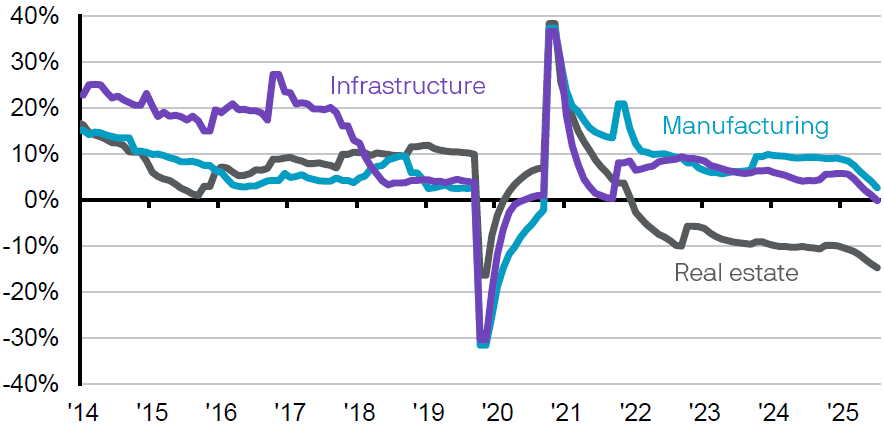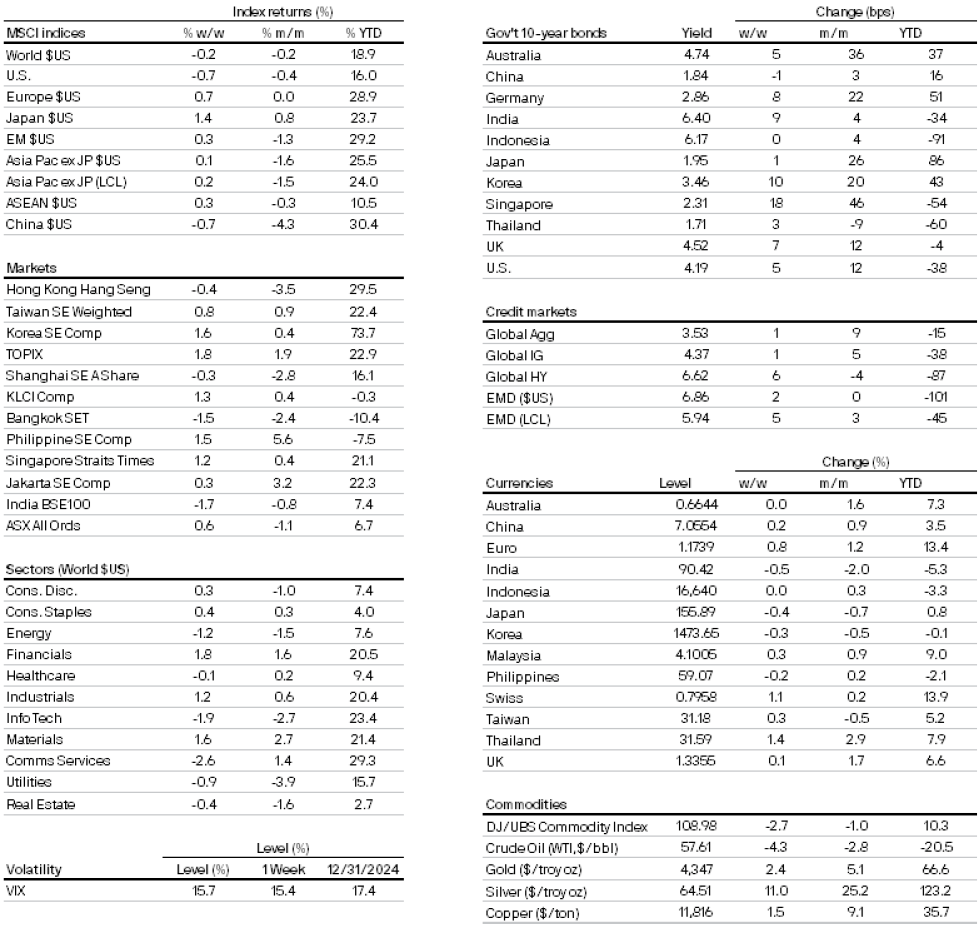Week in review
- RBA holds cash rate steady at 3.6%
- FOMC cuts fed funds rate by 25 bps to 3.50-3.75%
- China exports up 5.9% y/y
Week ahead
- China retail sales, industrial output
- U.S. unemployment, payrolls
- ECB monetary policy meeting
Thought of the week
China’s much awaited Central Economic Work Conference concluded on December 11 and set a modestly supportive and more balanced policy tone. Chinese officials aimed to achieve a ‘reasonable’ GDP growth with higher quality and emphasized expanding domestic demand and promoting high-quality development. The signals from the CEWC appeared modestly more pro-growth. However, compared with last year's December meetings, their easing stance for 2026 appears more measured. With continued, but measured, fiscal support for consumption and service sector development, this should benefit consumer-related sectors, healthcare, education, and services. With regards to the property sector, policymakers will offer moderate, targeted support to stabilize markets and address inventory, but dramatic stimulus or a sharp market turnaround is not expected. Key policy announcements at the provincial and national “Two Sessions” in early 2026 may provide further clarity on growth targets and fiscal parameters.
Real estate within fixed asset investment not expected to see a sharp turnaround
Year-to-date, year-over-year change

Source: CEIC, National Bureau of Statistics of China, J.P. Morgan Asset Management. Data reflect most recently available as of 12/12/25.
Market data

0903c02a82467a72
All returns in local currency unless stated otherwise.
Currencies’ return are based on foreign currencies per U.S. dollar. An appreciation of the foreign currency against the U.S. dollar would be positive and a depreciation of the foreign currency against the U.S. dollar would be negative.

